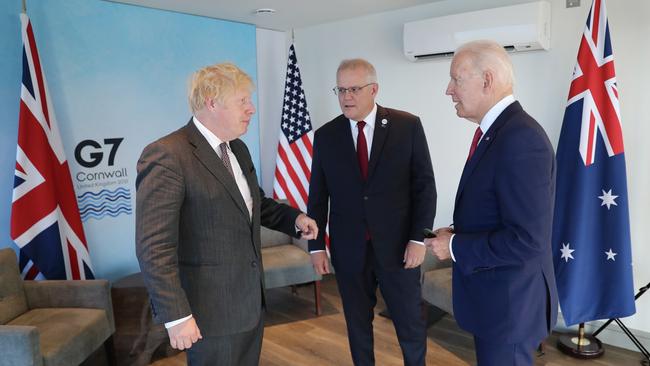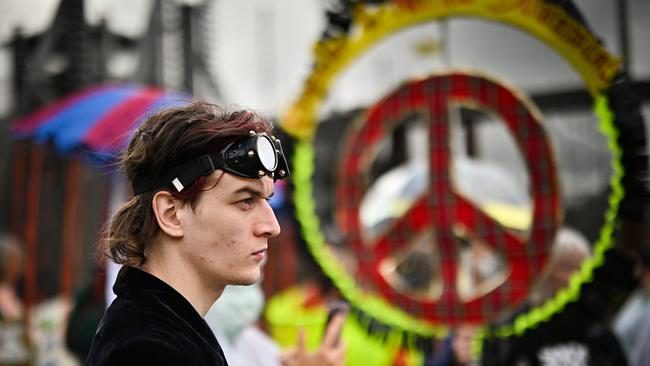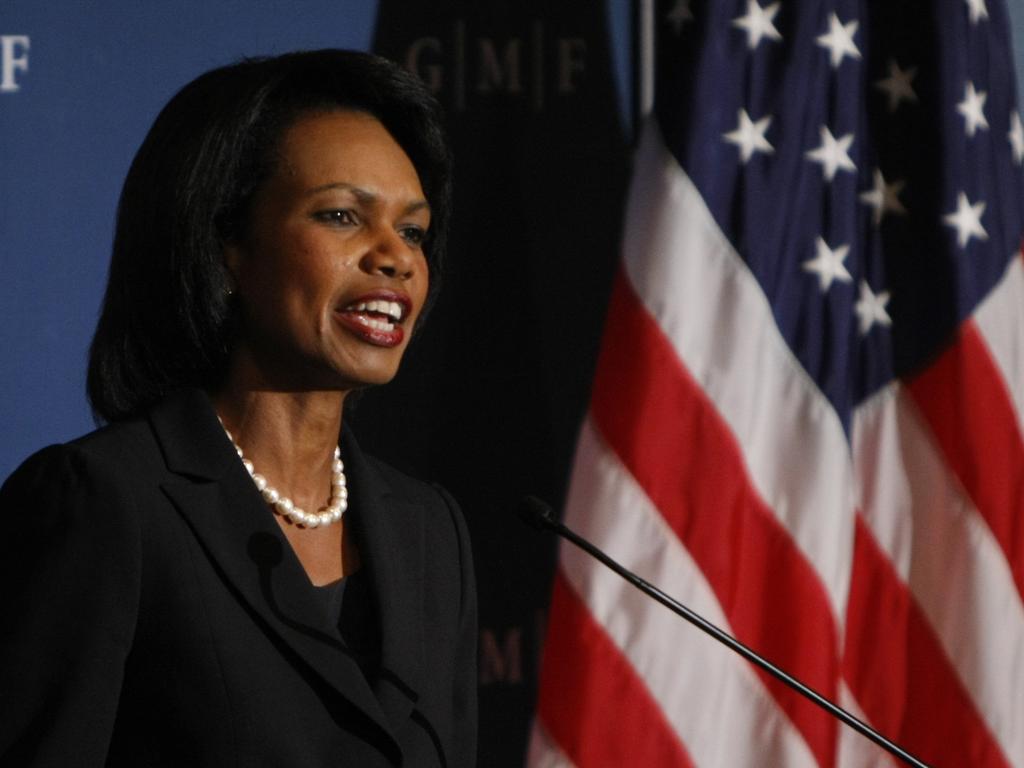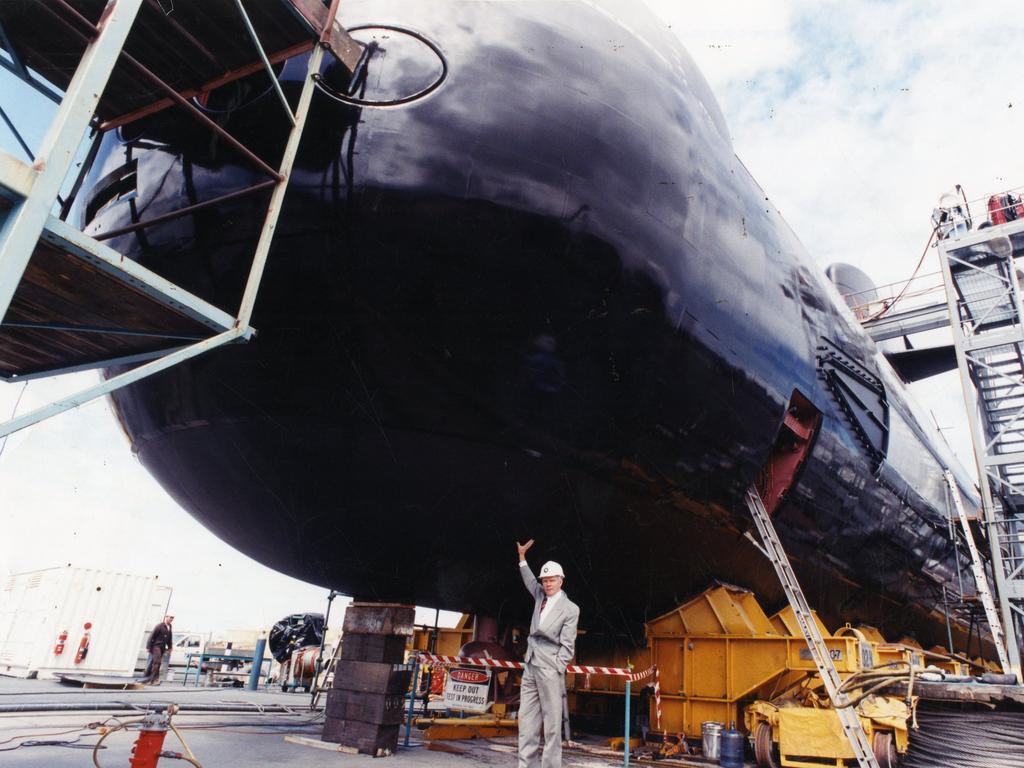A deep dive into what it takes to operate a nuclear sub fleet
Leading analysts provided a rude wake-up call for Scott Morrison and the Defence Department, which already seems to struggle with the most basic requirements.

Hyman G Rickover, “the father of the (US) nuclear navy”, used to test the wits of officer candidates during interviews by shortening the front two legs of their chairs.
Some who “gave stupid answers” were famously locked inside a broom cupboard. “I thought I’d give them a chance to think,” he told 60 Minutes.
Rickover headed the US Navy’s nuclear propulsion program for more than three decades, serving under six presidents.
His relentless commitment to detail and quality control enabled the US to build its first nuclear submarine, the Nautilus, in under five years.
By the time Rickover was forcibly retired at 82, the US nuclear navy had grown to 135 vessels. “I was a hundred per cent accountable. If anything had ever gone wrong with a nuclear ship, … who would they have pointed their finger at?” he said.
Rickover’s legacy pervades the US Navy and should be closely studied by Australia as it takes its first baby step towards acquiring nuclear-powered boats.
A legendary figure, he was considered brilliant, driven and uncompromising, and was happy to be regarded as “a real son-of-a-bitch”. He would accept only the best candidates, demanded total dedication, and was prepared to wage war with superiors to preserve the integrity of his program.
Does Australia have a Hyman G Rickover, with enough cut-through to get the nation’s nuclear submarine program off the ground? None presently springs to mind.
“I don’t see a Rickover in the Australian Defence Force,” Australian Strategic Policy Institute director Peter Jennings says.
He warns Australia will never get nuclear submarines if the program is run from within Defence, like the cancelled Attack-class plan before it.
“We need someone who is big-thinking, larger than life, who can pick up the phone to the Prime Minister pretty much 24/7,” Jennings says.
“My guess is that person won’t come out of the bureaucracy. If this program is run as a standard model of defence procurement, it will not work.”
Under the AUKUS agreement struck last month, the US and Britain have agreed to provide nuclear submarine technology to Australia. But neither will hand over their most closely-guarded defence secrets until Australia is ready to receive them.

There are also real questions over the speed at which Australia can expect to gain entry to the exclusive nuclear submarine club.
The British, which received American support to develop its first nuclear-powered submarine, had to wait another 50 years before subsequent US restrictions on nuclear technology transfer were lifted.
US chief of naval operations Admiral Mike Gilday said it would take “decades” before an Australian nuclear submarine would enter service.
But growing strategic threats and the scheduled retirement of the nation’s Collins-class boats from 2038 have left no room for delay. The chief of the government’s new nuclear-powered submarine task-force, Vice-Admiral Jonathan Mead, has been given 18-months to work out how to put Australia’s nuclear submarine plan into action.
But even setting aside Scott Morrison’s commitment to build eight nuclear subs in Adelaide – a mind-blowingly complex and expensive prospect – the enormity of the task cannot be overstated.
Only a Rickover-like approach to engineering, training, safety and security will convince Australia’s nuclear allies that we can be trusted with the technology.
Australia will need a new nuclear compliance framework, together with robust enabling legislation. Every piece of infrastructure that will touch the future nuclear subs will have to be redesigned and certified.
And yet, Australia’s Defence Department seems to struggle with even the most basic requirements when it attempts to deliver high-level programs.
Just three days before the AUKUS announcement, the Auditor-General revealed that Defence had allowed contractors to access highly classified information without proper security clearance, and continued to do so for years after the problem was first identified.
The failure was wildly out of step with the scale of Australia’s AUKUS ambitions, and was no doubt swiftly shared with the Pentagon and the British Ministry of Defence.
Australia is the world’s 13th largest economy, but as a nation of just 26 million and with a Defence force of fewer than 60,000 personnel, it suffers from huge constraints in its ability to marshal human capital.
Defence has long struggled to find enough sailors prepared to submit to the sacrifice and discomfort of regularly going to sea on the navy’s six Collins-class submarines. After years of effort, it has built up the nation’s submarine workforce to about 900. But none of them is qualified to operate a steam plant, much less a nuclear reactor.
The Chief of Navy, Vice Admiral Mike Noonan, confirmed on Friday that Australia would need a future submarine workforce of about 2300.
They will need to include commanders and supervisors with high-level nuclear qualifications, and large numbers of officer and non-commissioned engineers with training and hands-on nuclear experience.
As one defence analyst told The Weekend Australian, only slightly in jest: “The dumbest sailor on a nuclear boat is smarter than the smartest sailor in the regular navy.”
The catch-22 of submarine training is it requires submarines to train submariners.
Australian personnel will inevitably need to train on US or British nuclear boats. But will they take raw Australian recruits who have never been to sea?
There is a growing consensus that Australia will have to acquire – as hard as it is to accept after the spectacular cancellation of the Attack-class boats – an interim fleet of conventional submarines.
A “Son of Collins” is probably the most feasible option, levering off the planned life-of-type-extensions of the Collins-class boats.
“Having gone down the path we have gone down to get rid of the French contract, I think we will need some conventional submarines after the Collins,” Jennings says.
“That will be partly to plug the gap between the retirement of Collins and the new nuclear boats. And also to reflect the fact that we have gone from a planned 12 boats to eight.”
He says Adelaide could build a “Son of Collins” fleet, while the future nuclear submarines should come off an expanded US production line.
Contrary to the impression given by the Prime Minister, modern submarine reactors are not maintenance-free. While the reactor core is sealed, everything that connects to it needs to be painstakingly serviced to prevent catastrophic accidents.
“It’s not a perfect boundary. At times you have to replace gaskets and seals and things like that,” a former submarine commander tells The Weekend Australian.

“It doesn’t just sit there for 30 years before you hand it back and put it in the desert.”
So Australia will also need to find and train – from scratch – a large shore-based workforce of nuclear-qualified personnel to keep them running.
Few in the wider defence community believe Australia can build a fleet of nuclear subs in Adelaide. But building them offshore, or leasing boats from the US or Britain, would test the new AUKUS partnership to its limits.
Britain’s Astute-class production line is winding up, while the US can’t produce enough Virginia-class boats for its own needs, much less Australia’s.
Convincing the US to build subs for Australia would likely require Australian investment in a third US nuclear submarine production facility.
And leasing boats from either country – even older ones – would require them to hand over working submarines to a nation with no nuclear submarine experience at the expense of their own naval capability.
The other big question mark hanging over Australia’s nuclear ambitions is political.
The French Attack-class boats lasted just two elections. Australia’s nuclear submarine plan will have to withstand six federal polls.
Scott Morrison and Peter Dutton may be determined to make the plan work. But will a future Labor government?
It’s hard to see how an opposition of either stripe, shut out from the inner workings of the nuclear enterprise, will resist trying to score political points from the sidelines.
Getting it done will require a visionary figure, or several of them. As Rickover said to British Navy head Lord Louis Mountbatten in 1958: “What you want to run a show like this is a real son-of-a-bitch.”
Mountbatten’s reply is said to have delighted Rickover: “That is where you Americans have the edge on us; you have the only real son-of-a-bitch in the business.”





To join the conversation, please log in. Don't have an account? Register
Join the conversation, you are commenting as Logout